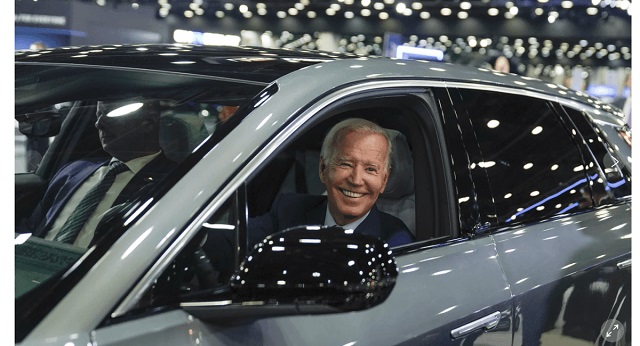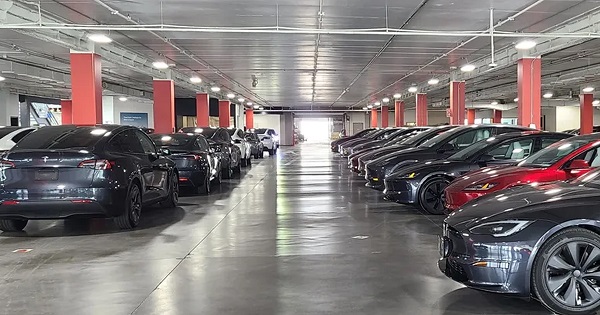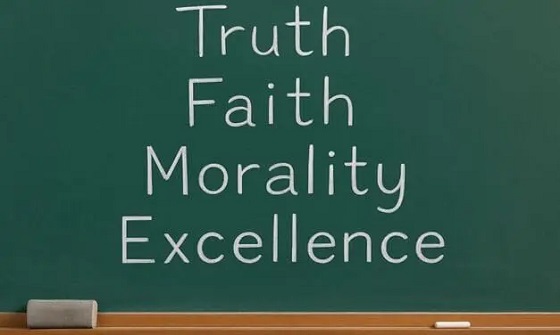Automotive
Biden-Harris Admin’s EV Coercion Campaign Hasn’t Really Gone All That Well

From the Daily Caller News Foundation
The future direction of federal energy policy related to the transportation sector is a key question that will be determined in one way or another by the outcome of the presidential election. What remains unclear is the extent of change that a Trump presidency would bring.
Given that Tesla founder and CEO Elon Musk is a major supporter of former President Donald Trump, it seems unlikely a Trump White House would move to try to end the EV subsidies and tax breaks included in the Inflation Reduction Act (IRA). Those provisions, of course, constitute the “carrot” end of the Biden-Harris carrot-and-stick suite of policies designed to promote the expansion of EVs in the U.S. market.
The “stick” side of that approach comes in the form of stricter tailpipe emissions rules and higher fleet auto-mileage requirements imposed on domestic carmakers. While a Harris administration would likely seek to impose even more federal pressure through such command-and-control regulatory measures, a Trump administration would likely be more inclined to ease them.
But doing that is difficult and time-consuming and much would depend on the political will of those Trump appoints to lead the relevant agencies and departments.
Those and other coercive EV-related policies imposed during the Biden-Harris years have been designed to move the U.S. auto industry directionally to meet the administration’s stated goal of having EVs make up a third of the U.S. light duty fleet by 2030. The suite of policies does not constitute a hard mandate per se but is designed to produce a similar pre-conceived outcome.
It is the sort of heavy-handed federal effort to control markets that Trump has spoken out against throughout his first term in office and his pursuit of a second term.
A new report released this week by big energy data and analytics firm Enverus seems likely to influence prospective Trump officials to take a more favorable view of the potential for EVs to grow as a part of the domestic transportation fleet. Perhaps the most surprising bit of news in the study, conducted by Enverus subsidiary Enverus Intelligence Research (EIR), is a projection that EVs are poised to be lower-priced than their equivalent gas-powered models as soon as next year, due to falling battery costs.
“Battery costs have fallen rapidly, with 2024 cell costs dipping below $100/kWh. We predict from [2025] forward EVs will be more affordable than their traditional, internal combustible engine counterparts,” Carson Kearl, analyst at EIR, says in the release. Kearl further says that EIR expects the number of EVs on the road in the US to “exceed 40 million (20%) by 2035 and 80 million (40%) by 2040.”
The falling battery costs have been driven by a collapse in lithium prices. Somewhat ironically, that price collapse has in turn been driven by the failure of EV expansion to meet the unrealistic goal-setting mainly by western governments, including the United States. Those same cause-and-effect dynamics would most likely mean that prices for lithium, batteries and EVs would rise again if the rapid market penetration projected by EIR were to come to fruition.
In the U.S. market, the one and only certainty of all of this is that something is going to have to change, and soon. On Monday, Ford Motor Company reported it lost another $1.2 billion in its Ford Model e EV division in the 3rd quarter, bringing its accumulated loss for the first 9 months of 2024 to $3.7 billion.
Energy analyst and writer Robert Bryce points out in his Substack newsletter that that Model e loss is equivalent to the $3.7 billion profit Ford has reported this year in its Ford Blue division, which makes the company’s light duty internal combustion cars and trucks.
While Tesla is doing fine, with recovering profits and a rising stock price amid the successful launch of its CyberTruck and other new products, other pure-play EV makers in the United States are struggling to survive. Ford’s integrated peers GM and Stellantis have also struggled with the transition to more EV model-heavy fleets.
None of this is sustainable, and a recalibration of policy is in order. Next Tuesday’s election will determine which path the redirection of policy takes.
David Blackmon is an energy writer and consultant based in Texas. He spent 40 years in the oil and gas business, where he specialized in public policy and communications.
Automotive
Another sign Canada’s EV mandate is FAILING

By Dan McTeague
While other countries are moving away from EVs, the Carney government is doubling down.
Last week, it was reported that the feds are considering reimbursing car dealerships impacted by the sudden suspension of EV rebates. It’s becoming clear that Canada’s EV ambitions are failing as EV sales are plummeting and car manufacturers are backtracking on their EV plans.
It’s not too late for the Carney government to backdown from its EV mandate.
Dan McTeague explains.
Automotive
America’s EV Industry Must Now Compete On A Level Playing Field


From the Daily Caller News Foundation
America’s carmakers face an uncertain future in the wake of President Donald Trump’s signing of the One Big Beautiful Bill Act (OBBBA) into law on July 4.
The new law ends the $7,500 credit for new electric vehicles ($4,000 for used units) which was enacted as part of the 2022 Inflation Reduction Act as of September 30, seven years earlier than originally planned.
The promise of that big credit lasting for a full decade did not just improve finances for Tesla and other pure-play EV companies: It also served as a major motivator for integrated carmakers like Ford, GM, and Stellantis to invest billions of dollars in capital into new, EV-specific plants, equipment, and supply chains, and expand their EV model offerings. But now, with the big subsidy about to expire, the question becomes whether the U.S. EV business can survive in an unsubsidized market? Carmakers across the EV spectrum are about to find out, and the outlook for most will not be rosy.
These carmakers will be entering into a brave new world in which the market for their cars had already turned somewhat sour even with the subsidies in place. Sales of EVs stalled during the fourth quarter of 2024 and then collapsed by more than 18% from December to January. Tesla, already negatively impacted by founder and CEO Elon Musk’s increased political activities in addition to the stagnant market, decided to slash prices in an attempt to maintain sales momentum, forcing its competitors to follow suit.
But the record number of EV-specific incentives now being offered by U.S. dealers has done little to halt the drop in sales, as the Wall Street Journal reports that the most recent data shows EV sales falling in each of the three months from April through June. Ford said its own sales had fallen by more than 30% across those three months, with Hyundai and Kia also reporting big drops. GM was the big winner in the second quarter, overtaking Ford and moving into 2nd place behind Tesla in total sales. But its ability to continue such growth absent the big subsidy edge over traditional ICE cars now falls into doubt.
The removal of the per-unit subsidies also calls into question whether the buildout of new public charging infrastructure, which has accelerated dramatically in the past three years, will continue as the market moves into a time of uncertainty. Recognizing that consumer concern, Ford, Hyundai, BMW and others included free home charging kits as part of their current suites of incentives. But of course, that only works if the buyer owns a home with a garage and is willing to pay the higher cost of insurance that now often comes with parking an EV inside.
Decisions, decisions.
As the year dawned, few really expected the narrow Republican congressional majorities would show the political will and unity to move so aggressively to cancel the big IRA EV subsidies. But, as awareness rose in Congress about the true magnitude of the budgetary cost of those provisions over the next 10 years, the benefit of getting rid of them ultimately subsumed concerns about the possible political cost of doing so.
So now, here we are, with an EV industry that seems largely unprepared to survive in a market with a levelized playing field. Even Tesla, which remains far and away the leader in total EV sales despite its recent struggles, seems caught more than a little off-guard despite Musk’s having been heavily involved in the early months of the second Trump presidency.
Musk’s response to his disapproval of the OBBBA was to announce the creation of a third political party he dubbed the American Party. It seems doubtful this new vanity project was the response to a looming challenge that members of Tesla’s board of directors would have preferred. But it does seem appropriately emblematic of an industry that is undeniably limping into uncharted territory with no clear plan for how to escape from existential danger.
We do live in interesting times.
David Blackmon is an energy writer and consultant based in Texas. He spent 40 years in the oil and gas business, where he specialized in public policy and communications.
-

 Education1 day ago
Education1 day agoWhy more parents are turning to Christian schools
-

 Alberta1 day ago
Alberta1 day agoOPEC+ is playing a dangerous game with oil
-

 Alberta1 day ago
Alberta1 day agoUpgrades at Port of Churchill spark ambitions for nation-building Arctic exports
-

 Business1 day ago
Business1 day agoIs dirty Chinese money undermining Canada’s Arctic?
-

 COVID-191 day ago
COVID-191 day agoJapan disposes $1.6 billion worth of COVID drugs nobody used
-

 conflict1 day ago
conflict1 day agoOne of the world’s oldest Christian Communities is dying in Syria. Will the West stay silent?
-

 COVID-191 day ago
COVID-191 day agoWATCH: Big Pharma scientist admits COVID shot not ‘safe and effective’ to O’Keefe journalist
-

 Bruce Dowbiggin1 day ago
Bruce Dowbiggin1 day agoHow Did PEI Become A Forward Branch Plant For Xi’s China?






